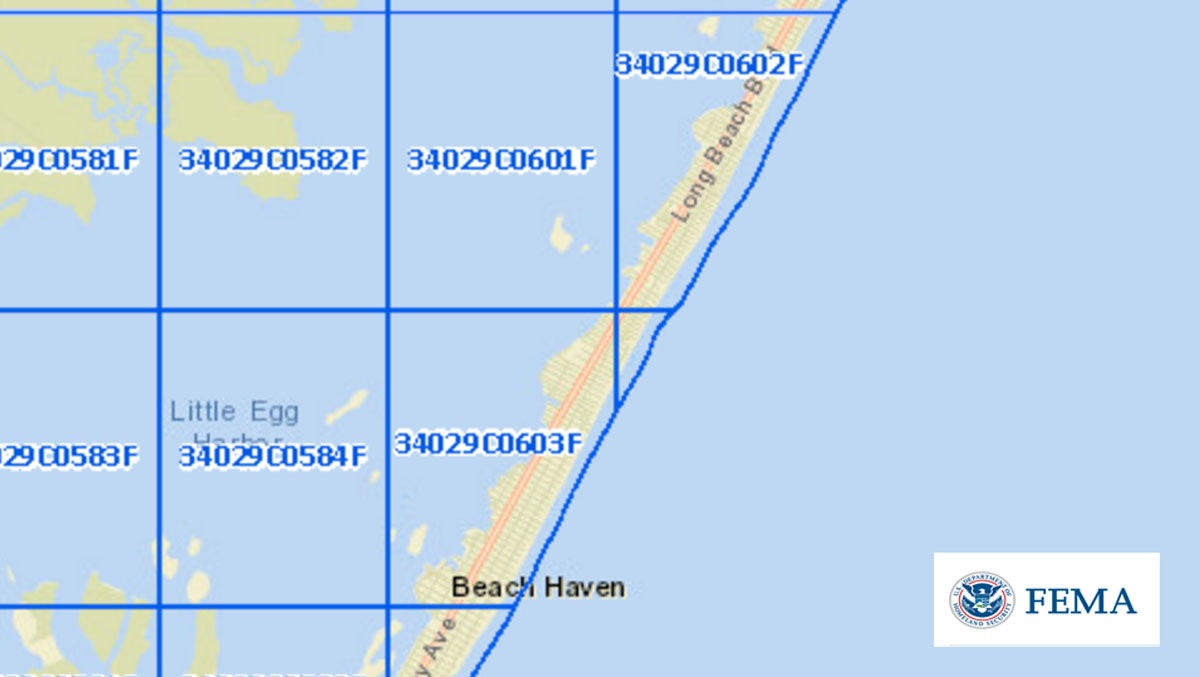Trump weakens building standards for federally supported projects in flood-zones

The federal government provides maps that show an areas risk for floods at msc.fema.gov
President Donald Trump on Tuesday repealed stringent building standards aimed at protecting government-financed projects in flood-prone areas by accounting for sea-level rise associated with climate change.
In overturning the two-year-old regulation initiated by the Obama administration, the executive order will roll back protections for infrastructure projects funded with federal aid from the impact of rising sea levels.
The standards, adopted in the wake of Hurricane Sandy and other big storms, were viewed as one of the most significant steps taken in decades to reduce exposure to more frequent flooding due to sea-level rise and climate change.
The action is part of a broad-based effort by the Trump administration to streamline the process for approving infrastructure projects and to roll back regulations dealing with climate change.
A baffling moveThe repeal disappointed and baffled environmentalists, planners, and flood-plain managers who argued the Obama standard ensured taxpayers’ dollars would not be wasted on infrastructure projects subject to repeated flooding.
“This anti-regulatory agenda is really going to put lives, first responders, and property at risk,” said Tim Dillingham, executive director of the American Littoral Society. “Economically, it is going to increase costs for disaster bailout and storm recovery efforts.”
The order will not bar state and local agencies from using a more stringent standard, nor does it apply to private investments.
Questioning Trump’s rationaleStill, many questioned the rationale behind the executive order signed by Trump. It occurred at a time when new studies have suggested increased risk to New Jersey communities posed by sea-level rise, with some towns facing chronic flooding every other week. More frequent and intense storms are expected as the climate warms, scientists predict.
“It is difficult to understand what benefits will come of rescinding this order,” said New Jersey Future, a nonprofit group promoting sensible growth. “The memories of Hurricane Sandy’s devastation are still fresh in the minds of many who live or work along the New Jersey shore, and rescinding this rule does nothing but increase the risk that they will endure similar devastation, or worse, as a result of future storms and a changing climate.”
The Obama era rule required federally funded projects to be built two feet above the 100-year flood elevation — three feet for hospitals, evacuation centers, and other critical buildings.
“This was a solid idea,” said John Miller, of the New Jersey Association of Flood Plain Management. “We are going to have worsening conditions. We have to build to future conditions.”
According to the White House, the executive order issued by Trump will make environmental and permitting processes needed for major infrastructure projects more efficient and effective.
Putting Americans back to work?The repealed standards had come under fire as costly and burdensome, delaying projects the administration argued could put Americans back to work and help rebuild the nation’s crumbling infrastructure.
Environmental groups disputed that assessment. “It’s reckless,” said Jeff Tittel, director of the New Jersey Sierra Club. “The idea is not to waste money and watch it wash away in the next storm.”
The decision to repeal the standards is likely to energize efforts in New Jersey to incorporate information on sea-level rise and climate change into planning at all levels of government in the state.
‘We hope the incoming governor sees the wisdom of establishing rigorous standards to keep such projects out of harm’s way,” New Jersey Future said.
The issue also could be hotly debated this fall when Congress is expected to reauthorize the National Flood Insurance program.
WHYY is your source for fact-based, in-depth journalism and information. As a nonprofit organization, we rely on financial support from readers like you. Please give today.




